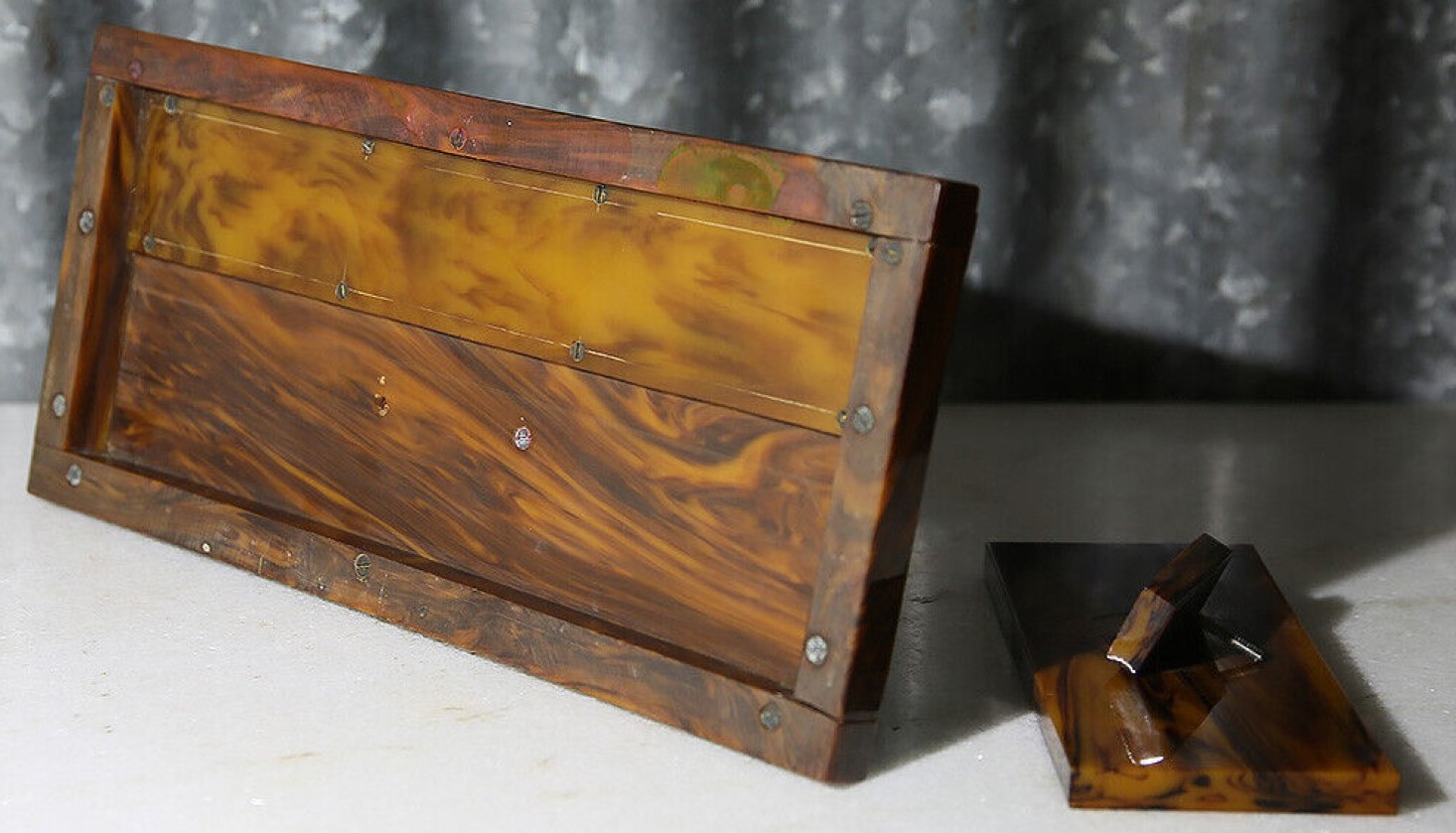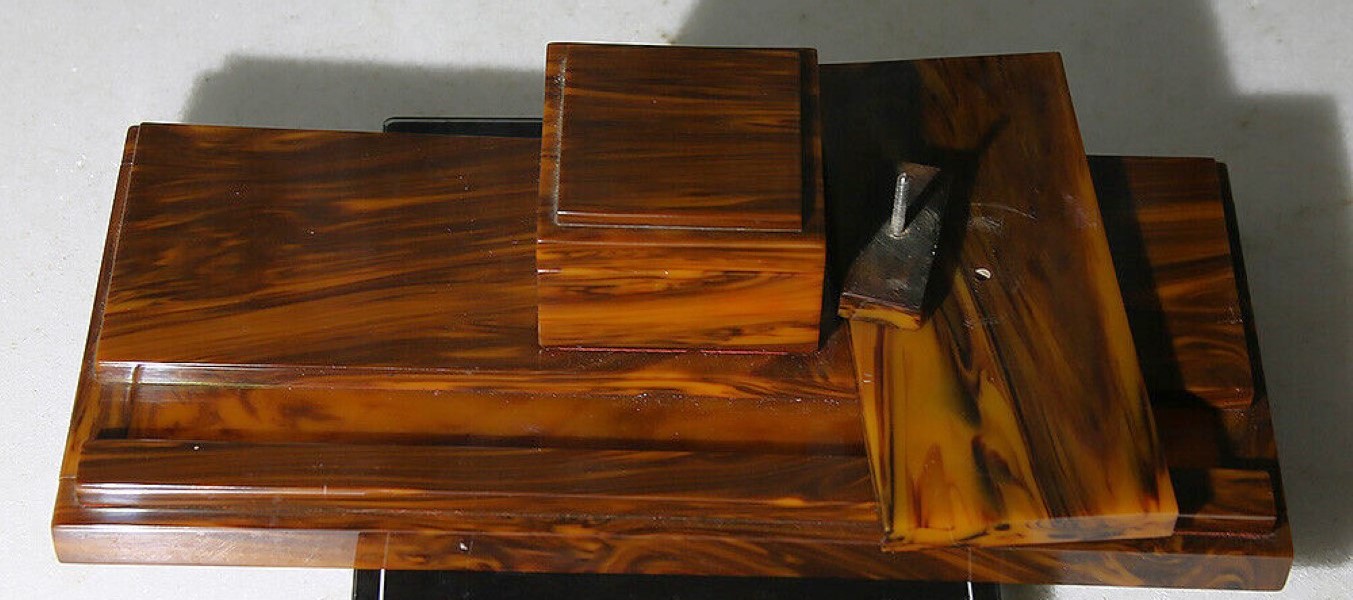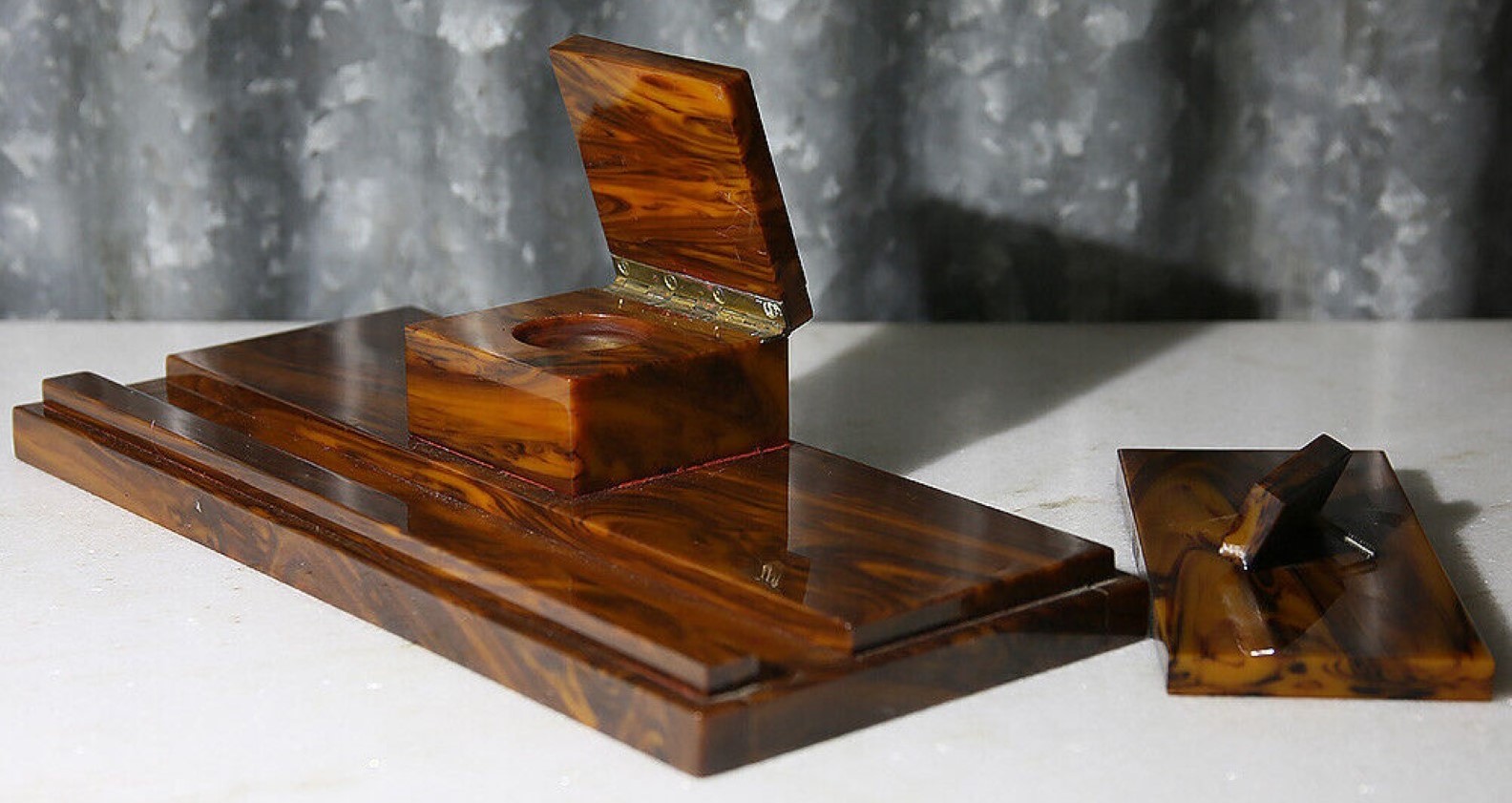
Catalin / Bakelite Marbled Desk Set
| Categories | Art Deco, Plastic - Bakelite - Gutta Percha |
| Material | Bakelite |
| Markings | Unmarked |
| Manufacturer | Undetermined |
| Origin | Undetermined |
| Date or Era | circa 1930 |
| Measuring | Inkwell: 11 ¾” x 5 ¼” x 2 ¾” high |
This set consists of an inkwell and a rocker blotter made of Catalin.
Bakelite or Catalin? Although Bakelite has clearly won the popularity contest when it comes to naming this type of plastic among collectors, they aren’t made exactly the same way even though they both have a phenolic base.
Bakelite
Dr. Leo Baekeland and his team of chemists developed phenol formaldehyde in the early 1900s. The Bakelite Corporation came about thereafter touting the slogan, “The Material of a Thousand Uses.” Fillers were mixed into the plastic as it was heated and pressure molded, and the result was very durable dark colored material. The applications for this plastic were indeed vast, according to the American Chemical Society:
“Bakelite can be molded, and in this regard was better than celluloid and also less expensive to make. Moreover, it could be molded very quickly, an enormous advantage in mass production processes where many identical units were produced one after the other. Bakelite is a thermosetting resin—that is, once molded, it retains its shape even if heated or subjected to various solvents.”
Catalin
Catalin, deemed “The Gem of Modern Industry” in period advertising, took things a step further in that regard. The American Catalin Corporation began making appealing plastics in the late 1920s by adding color to a liquid resin that was cast in lead forms and allowed to cool slowly, according to The Bakelite Collection by Matthew Burkholz (Schiffer). The material was still durable and heat resistant, but it was a lot more pleasing to the eye.
So, while Bakelite was used for items like insulators for electrical systems or handles on Deco-era toasters, for instance, Catalin was used for manufacturing varied jewelry, colorful radios, and other consumer goods widely collected today. Even so, most of these objects are described as Bakelite now.
Sold for $601 in November 2023
Content disclaimer. The information posted is the owner’s best knowledge and may not have been vetted by the SOIC. We welcome comments, corrections, and additions, working to make our website information comprehensive and accurate.
Join the Society of Inkwell Collectors (SOIC) – it’s free!
Founded in 1981 as a non-profit organization,
we are documenting inkwells (and accessories).
We’re here to help and inform!





